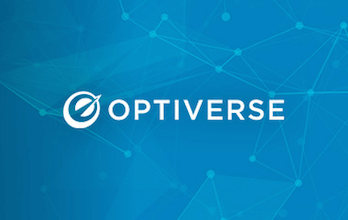
Download our FREE Testing Toolkit for A/B testing ideas, planning worksheets, presentation templates, and more!
Get It NowUnique Selling Point
What Is A Unique Selling Point?
A unique selling point (USP), also called a unique selling proposition, is the essence of what makes your product or service better than competitors. In online marketing, communicating your USP clearly and quickly is one of the keys to getting customers to convert on your site.
Why Is A Unique Selling Point Important?
A unique selling point defines your company’s unique position in the marketplace, getting at the heart of your business: the value you offer and the problem you solve. A strong USP clearly articulates a specific benefit – one that other competitors don’t offer – that makes you stand out.
If all the products appear to be the same, your prospective customers won’t know which one is right for them. Being clear about your unique selling proposition helps them differentiate between the variety of choices available to them. It is a crucial part of effective selling, especially online where consumers have so many options.
A USP can also serve an important role internally as it forces you to consider your company’s mission and its very reason for being.
As a business owner, you need to consider and communicate who your business is for, what drives you to offer the services you offer, and how you want to make a unique impact.
Your USP is your key differentiator and the reason your customer will buy from you.
Unique Selling Point Examples
Zappos is an online shoe store, and there is nothing especially unique about selling shoes online. However, their selling point is unique: free returns. There is no penalty whatsoever to returning a pair of shoes you don’t want, a major convenience to customers.
Toms Shoes is a shoe manufacturer. Again, there is nothing especially unique about that. But Toms Shoes’ unique selling point is that for every pair of shoes a customer purchases, the company donates a pair to a child in need. Toms Shoes helps put shoes on needy children’s feet; this is their unique selling point.
USPs are by their nature unique to each business, but roughly fall into three major categories:
- Quality - Superior materials or ingredients, superior craftsmanship, proprietary manufacturing methods, one of a kind
- Price - The lowest price guaranteed, price matching, free shipping, bulk discounts, special offers Service - 24 hour customer service, free returns, satisfaction guarantees, customer support line
For established companies, the USP can eventually become synonymous with their brand, to where when the company’s name is automatically associated with the unique value proposition that the brand offers.
How To Test Your USP With A/B Testing
If you are uncertain about what drives your customers to buy from you, then A/B testing your company’s USP on landing pages can help.
Through testing, you can determine the messages that resonate best with your target audience by measuring a specific conversion goal such as a product purchase.
Let’s say that you sell Lutz marbles, a rare collectible type of marble. You are not sure whether people are more compelled to buy them for the ‘goldstone’ in the marbles or their age (they are more than 100 years old).
Should your unique selling point be the goldstone or their age?
You could find the answer to this question by setting up an A/B test for your landing page where you test two different headlines:
Variation A: Precious & Rare ‘Goldstone’ Marbles for Sale
Variation B: Precious & Rare 100-Year Old Marbles for Sale
(By the way, the USP on a landing page isn’t always just the headline; it usually consists of some combination of a headline, subheadline and a bulleted list of benefits).
Using a service like Optimizely, you can track marble purchases as your conversion goal and see which USP gets a higher percentage of conversions.
Ready to learn more?

Get your copy of the testing toolkit.
Use the testing toolkit to start or scale your testing program.

Want to stay ahead of the competition?
Help your organization master one of the four key initiatives covered in this webinar series.

Join the community.
Meet Optiverse — a place to explore, learn, and connect around experience optimization.